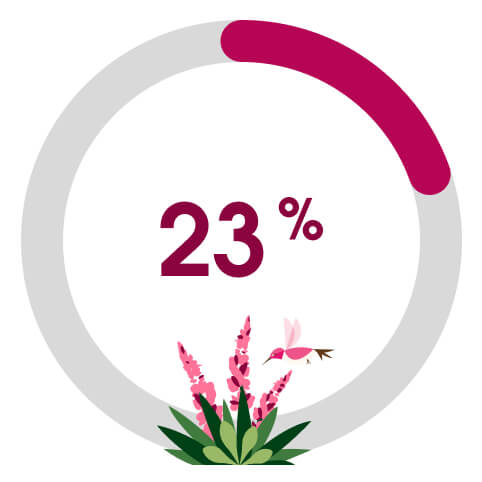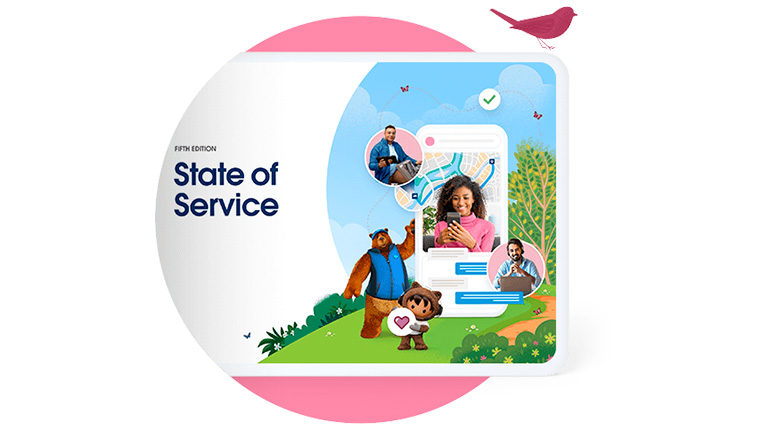Inside the Sixth Edition of the State of Service Report
New research reveals the top three trends driving the strategic role of customer service and field service in the age of AI and data.
The service landscape is changing faster than ever. Customers continue to have sky-high expectations, and service organisations are looking for innovative ways to deliver quality service at scale and boost agent productivity. Meanwhile, the meteoric rise of artificial intelligence (AI) is proving to be a game-changer — provided that leading companies stay focused on keeping their customers’ data safe.
As a customer service leader, you know it’s difficult to choose the right path when the ground is shifting beneath your feet. That’s where the latest edition of “State of Service” comes in. For this annual report, we spoke with over 5,500 service professionals worldwide to get the latest answers to today’s most pressing questions. Our findings reveal that service leaders are focusing more attention on generating revenue from the contact centre to the field, but the pressure is on to invest in the right technology that directly impacts the bottom line.

ROI CALCULATOR
Value Calculator to See Service Cloud ROI

DEMO
Generate Lifelong Customers With AI + Data + CRM

Trend #1: Service organisations shift from cost-cutting to revenue generation.
These dynamics raise a key question. Will higher budgets keep pace with customer demand? The answer will depend on careful planning, efficient resource allocation, and the adoption of technologies and processes that will help service organisations grow with intention. But the stakes couldn’t be higher — especially when you consider that 77% of service operations professionals say they can’t reach their goals without more budget.
So what’s the next right step? Our research shows that leading organisations are actively tracking key performance indicators (KPIs) that are linked to tangible business outcomes. In fact, the share of service organisations tracking revenue generation has nearly doubled since 2018, from 51% to an astonishing 91%. The share tracking customer retention rose by 29 percentage points over the same period. If those customer service analytics aren’t already on your radar, it’s time to take action — otherwise, you risk getting left behind.
It’s also a good idea to arm your people with the best available tools. According to our research, the latest technologies are making an especially big impact in field service, where the overwhelming majority of mobile workers say innovations like intelligent scheduling, augmented reality, and AI-generated summaries empower them to be more agile and efficient in the field. Just as important, 81% of mobile workers say these technologies help them feel safer — and a worker who feels safe is better equipped to deliver next-level customer service.

Trend #2: Personalised, proactive service becomes the norm.
Customer expectations keep going up: they want superior service, and they want it now. According to the State of the Connected Customer report, when companies meet those expectations, 88% of customers are more likely to purchase again — making quality interactions essential to keep customers coming back for more.
To make that happen, many companies are investing in technology that delivers a holistic view of their customers. In fact, our research found that 82% of high-performing organisations use the same customer relationship management (CRM) platform across service, sales, and marketing — up from 62% just two years ago.
Why does that matter? A solid data foundation also makes it easier to share accountability for metrics like customer satisfaction (CSAT), Net Promoter Score, and customer effort score. Unifying trusted data on one CRM also enables cross-departmental teams to get a single view of the customer and deliver more proactive customer service. “It’s essential to proactively resolve issues before they have any significant impact,” says Jules O’Donnell, Salesforce administration manager at Quickbase. “This means keeping up with technology solutions to scale service and meet customers where they are.”

Trend #3: Organisations lean into AI and automation.
The vast majority of agents and mobile workers (77% and 74%, respectively) report increased and more complex workloads compared to just one year ago. Over half say they’ve experienced burnout, whether they work in a contact centre or in the field. That could explain why, according to 69% of service decision makers, agent attrition is a major or moderate challenge.
Generative AI is here to help. By using AI to create summaries, reports, service responses, and even knowledge articles, organisations are finding new ways to meet customers’ needs in less time — and enabling human agents to devote their energy to more complex and challenging interactions.
The benefits are clear: 95% of decision makers at organisations with AI report cost and time savings, and 92% say generative AI helps them deliver better customer service. It should come as no surprise, then, that 83% of decision makers plan to increase their AI investment over the next year, while only 6% say they have no plans for the technology whatsoever.
What does that mean for your organisation? Keep in mind that AI is only as reliable as the data behind it. A recent Harvard Business Review study found an AI trust gap: most people (57%) don’t trust AI and 22% are neutral. Our own research echoes those findings, with 68% of customers telling us that advances in AI make it even more important for companies to be trustworthy.
In short, the companies that use this technology effectively and ethically will come out on top. That means it’s more important than ever for humans to remain at the helm of every AI innovation, orchestrating this powerful tool and providing valuable training and oversight every step of the way.
Uncover more insights from the "State of Service" report

Video

Website

Report

.png)





